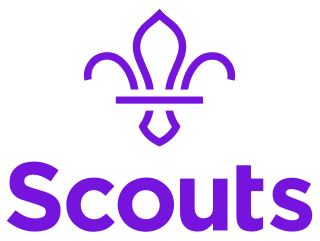
The Baden-Powell Scouts' Association (B-PSA) is a worldwide youth organisation originating in the United Kingdom, with friendly relationships with similar traditional scouting organisations in various countries. Baden-Powell Scouting focuses on the importance of tradition in the scout movement.

Cub Scouts, Cubs or Wolf Cubs are programmes associated with Scouting for young children usually between 8 and 12, depending on the organisation to which they belong. A participant in the programme is called a Cub. A group of Cubs is called a "Pack".

Scouts Canada is a Canadian Scouting association providing programs for young people, between the ages of 5 and 26, with the stated aim "To help develop well rounded youth, better prepared for success in the world". Scouts Canada, in affiliation with the French-language Association des Scouts du Canada, is a member of the World Organization of the Scout Movement. In 2021–22, youth membership stood at 33,899, a 48% decline from 64,693 in 2014–15. Over the same period, volunteer numbers also declined 43%, from 20,717 in 2015 to 11,765 in 2022. Scouts Canada has declined significantly in size since its peak: youth membership is down 82% from 288,084 in 1965 and volunteer numbers are down 50% from 33,524 in 1965.

The Scout Association, which also uses the name Scouts UK, is the largest Scout organisation in the United Kingdom. It's the World Organization of the Scout Movement's recognised member for the United Kingdom. Following the origins of the Scout movement in 1907, The Scout Association was formed in 1910 and incorporated in 1912 by a royal charter under its previous name of The Boy Scouts Association.

Cub Scouting is part of the Scouting program of Scouting America, formerly known as Boy Scouts of America (BSA), available to boys and girls from kindergarten through fifth grade, or 5 to 10 years of age and their families. Its membership is the largest of the five main BSA divisions. Cub Scouting is part of the worldwide Scouting movement and aims to promote character development, citizenship training, personal fitness, and leadership.

The Boy Scouts of America (BSA) use uniforms and insignia to give a Scout visibility and create a level of identity within both the unit and the community. The uniform is used to promote equality while showing individual achievement. While all uniforms are similar in basic design, they do vary in color and detail to identify the different membership divisions of Cub Scouting, Scouts BSA and Venturing. Many people collect BSA insignia such as camporee and jamboree emblems, council shoulder strips and historical badges.

Cub Scouts is the Cub Scout section of Scouts Canada for children aged from 8 to 10. Originally the "Wolf Cubs," the program offers badges to youth members as a mark of achievement in an interest area. The badges are grouped into six activity areas as described in The Cub Book. While youth experience fun and excitement presented by the program, each activity area focuses on a specific purpose and goal, intended to be relevant to modern children while meeting developmental needs. Originally the requirement entry was age 7 until 2001. Each activity area offers a variety of badges that youth may earn and sew onto their uniform sash:
Beavers is a programme associated with some Scouting organisations generally for children aged 5/6 to 7/8 who are too young for the Cub programme.
Beaver Scouts, often shortened to Beavers, is the second youngest official section of Scouting operated by The Scout Association in the United Kingdom. The core age range for Beaver Scouts is six to eight years. Sections of Beaver Scouts are known as Colonies and are run locally by Scout Groups. After reaching the age of eight, a Beaver Scout will then move on to Cub Scouts. The section officially launched in 1986 but had existed before this as trial and unofficial sections as far back as 1963.

Savez Izviđača Srbije, English: Scout Association of Serbia) is the primary national Scouting organization of Serbia. A referendum on independence was held in Montenegro on May 21, 2006, voting to leave its state union with Serbia by a narrow margin. Montenegro became the world's 193rd recognized sovereign state, which has then split the Savez Izviđača Srbije i Crne Gore, as happened with Czechoslovakia in 1993, meaning that the membership in the World Organization of the Scout Movement was transferred to Savez Izviđača Srbije.

The Pathfinder & Rover Explorer Scouts' Association (P-RESA) is an independent Traditional Scouting Association in the United Kingdom, with International branches. The Association's training programme runs along the lines of Baden-Powell's original Scouting for Boys, upholding the traditions and practices set out by B-P, using the 1938 Boy Scouts' Association Policy Organisation & Rules (POR) as its basis.
Cub Scouts is the section of Scouts Australia for boys and girls aged 8 to 11 (inclusive), often known simply as 'Cubs'. The Cub Scout section follows after Joey Scouts and is before Scouts. Cub Scouts wear a uniform shirt with navy blue panels, and yellow shoulders.

The Boy Scouts of America (BSA) was inspired by and modeled on The Boy Scouts Association, established by Robert Baden-Powell in Britain in 1908. In the early 1900s, several youth organizations were active, and many became part of the BSA.

Cub Scouts, often shortened to Cubs, are a section of Scouting operated by The Scout Association with a core age of eight to ten and a half years of age. This section follows on from the Beaver Scouts and precedes the Scout section.
Grasshopper Scouts, Grasshopper Section, or simply Grasshopper, is a Scout section of The Scout Association of Hong Kong in Hong Kong for 4- to 8-year-old boys and girls. Established in 1985, the Grasshoppers are modeled after the Beaver Scouts from the United Kingdom. Grasshopper is the youngest section in Hong Kong Scouting and the second largest section after the Cub Scout Section.

Beaver Scouts, usually referred to as Beavers, is the youngest section of Scouting operated by the Baden-Powell Scouts' Association. The core age range for Beaver Scouts is six to eight years, though exceptions can be granted. Individual sections of Beaver Scouts, known as a Colony, are run by the local Scout Group. After reaching the age of eight, a Beaver Scout will then move on to Wolf Cubs.
The advancement program for the Scout Association of Japan is symbolized by the earning of several rank badges.
Wolf Cubs, usually referred to as Cubs, is the 3rd youngest section of Scouting operated by the Baden-Powell Scouts' Association, following on from the Beaver Scouts section. The core age range for Wolf Cubs is eight to eleven, though exceptions can be granted. Individual sections of Wolf Cubs, known as a Pack, are run by the local Scout Group. After reaching the age of ten and a half, a Wolf Cub may move on to Scouts.

International Boy Scouts, Troop 1, Japan's first Boy Scout troop, was founded in 1911, with Clarence Griffin as Scoutmaster. Despite its early multinational character the troop's original registration was with the London headquarters of The Boy Scouts Association as "British Scouts in Foreign Countries". This initial charter was due to there being no international Boy Scout office and the "nationality requirement" that was in effect at the time. In 1918, the troop's character changed considerably when the new Scoutmaster, Bro. Joseph Janning, received approval from Lord Baden-Powell to officially reorganized the troop as a mixed-nationality, or "international", troop. B-P subsequently brought the Troop's situation before the 3rd World Scout Conference where the newly formed Boy Scouts International Bureau received approval to directly register Troop 1 and, in the future, other such "international" groups. The troop was then directly registered by the Boy Scouts International Bureau and was issued the Boy Scout movement's first "mixed nationality" charter, dated October 30, 1925, signed by Baden-Powell as Chief Scout and Hubert S. Martin as Director of the new International Bureau. Within a few years the nationality requirement was abolished and, even though the Bureau maintained the direct registration of Troop 1 and other groups already registered, new groups were requested to join the national organization of the country in which they were located and no new groups were chartered. Over the years the directly chartered groups one-by-one and for varied reasons slowly disbanded and by 1955 only Troop 1 remained. The troop has been continuously active, including war years, since its first meeting held in Yokohama, Japan on October 16, 1911, and currently consists of coed sections of Beaver Scouts, Cub Scouts, Scouts, Senior Scouts, and Veteran Scouts.

Squirrels is a programme for four to six-year-old infant children, which is operated by The Scout Association in the United Kingdom. The programme was launched in September 2021.













